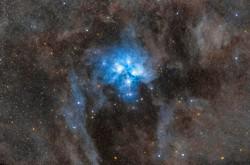Glossary term: Messier Object
Description: A Messier object is one of the 110 objects first cataloged by Charles Messier and Pierre Méchain in 1781. Messier and Méchain were looking for comets, which appear fuzzy and extended but found many fuzzy, extended objects that did not appear to move. They cataloged these objects so as not to waste observing time on them if they observed them again. These fuzzy, extended objects beyond our Solar System became known as "nebulae".
In its present form, the catalog contains 55 star clusters, 39 galaxies, 11 true nebulae, and five star groupings. These objects are favorite targets for amateur astronomers to observe. One astronomer's trash is another's treasure.
Messier Objects are often referred to by their catalog number prefixed by the letter "M". So the spiral galaxy Messier 101 is often referred to as M101.
Related Terms:
See this term in other languages
Term and definition status: This term and its definition have been approved by a research astronomer and a teacher
The OAE Multilingual Glossary is a project of the IAU Office of Astronomy for Education (OAE) in collaboration with the IAU Office of Astronomy Outreach (OAO). The terms and definitions were chosen, written and reviewed by a collective effort from the OAE, the OAE Centers and Nodes, the OAE National Astronomy Education Coordinators (NAECs) and other volunteers. You can find a full list of credits here. All glossary terms and their definitions are released under a Creative Commons CC BY-4.0 license and should be credited to "IAU OAE".
Related Media
The Pleiades M45 with Majestic Dust
Credit: Mohamed Usama/IAU OAE
License: CC-BY-4.0 Creative Commons Attribution 4.0 International (CC BY 4.0) icons









